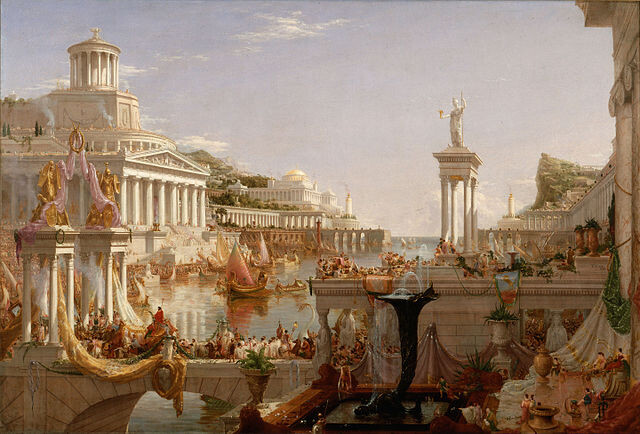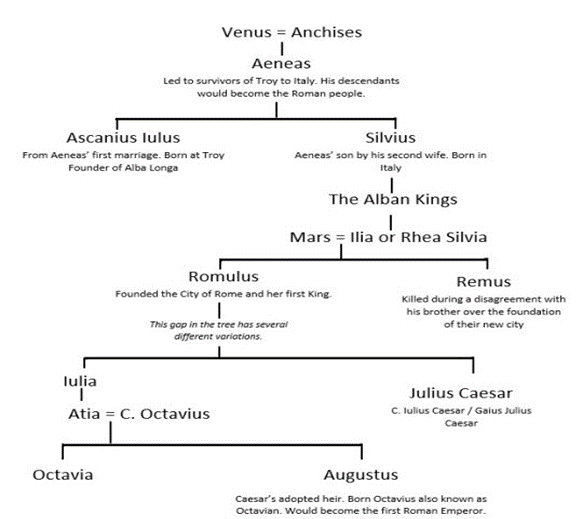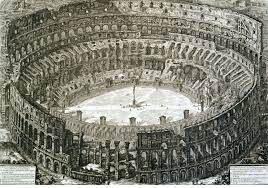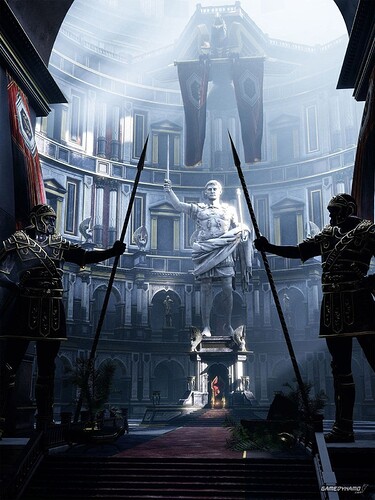Ancient Rome had a large influence on the modern world. Though it has been thousands of years since the Roman Empire flourished, we can still see evidence of it in our art, architecture, technology, literature, language, and law. From bridges and stadiums to books and the words we hear every day, the ancient Romans have left their mark on our world.
Even today, the saying ‘All roads lead to Rome’ still is prevalent, which means all paths or activities lead to the center of things. This was literally true in the days of the Roman Empire, when all the empire’s roads radiated out from the capital city, Rome.
Aside from its military might and architecture, one of the most noteworthy characteristics are the emperors (the good and the bad). The aim of this project is to transform users into a worthy emperor, an imperator, one that holds power, authority, influence and even divinity just as some Roman emperors who were deified did. Not only so, but to become the one in your bloodline to bring about an upheaval and establish a great and new foundation for the future of your bloodline
-a roman empire of your own.
Main Fields
- The Divine Ancestor (Romulus)
- Emperor (Becoming an Emperor)
- Rome (The Colosseum and other famous structures)
The Divine Ancestor
The most well-known of Rome’s long line of emperors would include individuals such as Julius Caesar, Nero, Caligula, Hadrian, Marcus Aurelius… and the list goes on. However, the story of Rome’s founding is one that may be less well-known due to the element of mystery, mythology and divinity.
That is- The Progenitor of Rome: Romulus
The founding hero of Rome that appears in Rome’s foundation myth. Born from the God of War Mars and the beautiful princess Rhea Silvia, it has been said that he was raised with a beast of the gods, a wolf (lupa). According to the origin myth of Rome, Romulus was the legendary founding father and first king of Rome who laid the foundations of the ever-glorious Great Empire of Rome that absorbed the Mediterranean nations. Various traditions attribute the establishment of many of Rome’s oldest legal, political, religious, and social institutions to Romulus and his contemporaries. Although many of these traditions incorporate elements of folklore, and it is not clear to what extent a historical figure underlies the mythical Romulus, the events and institutions ascribed to him were central to the myths surrounding Rome’s origins and cultural traditions.
According to Roman mythology, Romulus and Remus were the sons of Rhea Silvia by the god Mars. Their maternal grandfather was Numitor, the rightful king of Alba Longa, through whom the twins were descended from both the Trojan hero Aeneas, and Latinus, the king of Latium. Before the twins’ birth, Numitor’s throne had been usurped by his brother, Amulius, who murdered Numitor’s son or sons, and condemned Rhea Silvia to perpetual virginity by consecrating her a Vestal. When Rhea became pregnant, she asserted that she had been visited by the god Mars. Amulius imprisoned her, and upon the twins’ birth, ordered that they be thrown into the Tiber. But as the river had been swollen by rain, the servants tasked with disposing of the infants could not reach its banks, and so exposed the twins beneath a fig tree at the foot of the Palatine Hill.
In the traditional account, a she-wolf happened upon the twins, and suckled them until they were found by the king’s herdsman, Faustulus, and his wife, Acca Larentia. The brothers grew to manhood among the shepherds and hill-folk. After becoming involved in a conflict between the followers of Amulius and those of their grandfather Numitor, Faustulus told them of their origin. With the help of their friends, they lured Amulius into an ambush and killed him, restoring their grandfather to the throne. The princes then set out to establish a city of their own. They returned to the hills overlooking the Tiber, the site where they had been exposed as infants. They could not agree on which hill should house the new city. When an omen to resolve the controversy failed to provide a clear indication, the conflict escalated and Romulus or one of his followers killed Remus.
Key elements (Subfields) to Romulus that this field will focus on:
- Divine Heritage
- The Wolf
- Apotheosis
Divine Heritage: Romulus is the son of Mars, the Roman God of War and equivalent to the Greek Ares, as well as through his mother, a descendant of the Roman Goddess of Love, Venus, the equivalence of the Greek Aphrodite.
Comparing Mars to Ares:
Mars was a patron deity of Rome and was beloved by its people. In contrast, the Greeks had a more ambiguous relationship with Ares, a god they sometimes regarded with suspicion and distaste. As a martial deity, Ares embodied aspects of war like courage and honour, but also bloodlust and savagery. According to Robert Graves, “All his fellow immortals hate him, from Zeus and Hera downwards.”
The god of war was beloved only by his sister Eris, who would spread rumours and jealousy to incite war. Hades, the god of the underworld, was also more fond of Ares because of his eagerness to populate his realm with the dead. On the other hand, The Romans were much fonder of their chief martial deity, Mars. Mars’ duality as a war god and an agricultural deity seems contradictory but it may reflect the early ideals of the Roman Republic. Until the Marian reforms established a professional standing army, Rome’s mostly agriculturally-based citizenry would form the core of the army in times of need. Early Roman ideals reflected this duality between farming and military service. The Romans associated Mars with “Virtus“, a particular virtue associated with courage, manliness, and excellence. One of his sacred animals, the wolf, was also a symbol of Rome. Romulus (Rome’s founder) and Remus were raised by a she-wolf until they were discovered by humans in Roman mythology. Given the Romans’ affinity with Mars, he is depicted in a more flattering light in Roman mythology. The relationship between Mars and Venus, the Roman equivalent of Aphrodite, was a common motif in Roman art. However, the adulterous connotations were dropped. The two lovers were sometimes also implied to be married.
Comparing Venus to Aphrodite:
Aphrodite and Venus are two goddesses with similar stories who became conflated over time. Aphrodite was the Greek goddess of love, beauty, pleasure, and procreation, while Venus was the Roman goddess of love, beauty, sex, fertility, prosperity, and victory. Both Aphrodite and Venus were married to Hephaestus, though Aphrodite also had an affair with Ares. Aphrodite was born from Zeus and Dione, while Venus was born from the union of Jupiter and the mortal woman Io. Aphrodite is associated with the sea and often depicted riding a dolphin or shell, while Venus is associated with gardens and flowers. In terms of their Roman counterparts, Aphrodite would be equivalent to Cupid (god of love) and Venus would be equivalent to Victory (goddess of victory). There are many similarities between Aphrodite and Venus, but also several key differences.
Aphrodite and Venus are both goddesses of love, but their origins, symbols, and meanings differ. Aphrodite was born from the foam of the sea after Uranus’ genitals were castrated by his son Cronus. She is often depicted as a beautiful woman with long hair and a serene expression. Her symbol is the rose, which represents passion and desire. Venus was also born from the sea, but she emerged fully formed from the shell of a giant clam. She is often portrayed as a voluptuous woman wearing an elaborate gown. Her symbol is the apple or mirror, which represents vanity. Although they share some similarities, Aphrodite and Venus are two very different goddesses with unique attributes that have inspired artists for centuries
Under Greek influence, Venus was equated with Aphrodite and assumed many of her aspects. The name of Venus then became interchangeable with Aphrodite. Most of the tales of these two goddesses are identical. Both are known for their jealousy, their beauty and for their affairs with both gods and mortals. Venus took on the aspect of a gracious Mother Goddess full of pure love. She assumed the divine responsibility for domestic bliss and procreation, and domestic bliss rather than Aphrodite’s uninhibited, promiscuous side. She is the mother of two children, one with her husband and one with a mortal lover, Anchises. Her mortal son Aenaes, fled Troy and founded the Nation of Italy. It is through this that he became the mythical ancestor of the Roman people. In turn, Venus was treated with special honor being the divine ancestor of the Roman empire. Though Venus is often associated with love and fertility, she is also known as the patron goddess of prostitutes and the protector against vice. Julius Caesar himself worshiped her as “Mother Venus” and had a temple erected in 46 BCE under her name. He thought that the Roman people were descendants of this goddess and introduced the cult of Venus Genetrix, the goddess of motherhood and marriage. She was also worshiped under many other epithets.
This subfield aims to transform users’ origin into one that is divine via (benefits):
- Conceptualization and crystallization of the divine blood of Mars and Venus into our being, including its full physical manifestation embedded into our DNA and manifestation of all the perks of being a Demigod of Mars and Venus on all planes (physical, spiritual and energetic etc.) (including but not limited to being stronger, healthier and more physically attractive etc.)
- Mars as a patron + his complete blessings and protection
- Venus as a patron + her complete blessings and protection
- Automated physical/martial/warrior training by Mars himself
- Sculpting and beautification of the physical form and appearance by Venus herself
- Removal of all physical flaws functional and cosmetic
- Attraction of ideal partners by Venus
- etc. that comes from complete blessings and transformation
The Wolf
Romulus and his brother were raised by a she-wolf, and as such would have experienced what it is like to live like a wolf, along with gained traits and skills to survive in a primal state of being unlike ordinary humans who live in civilization.
Benefits:
- Wolf Bones
- The Wolf Experience
- The primal flow of energy of the Dire Wolf
Apotheosis
Apotheosis (from Ancient Greek ἀποθέωσις (apothéōsis), from ἀποθεόω/ἀποθεῶ (apotheóō/apotheô) ‘to deify’), also called divinization or deification (from Latin deificatio ‘making divine’), is the glorification of a subject to divine levels and, commonly, the treatment of a human being, any other living thing, or an abstract idea in the likeness of a deity.
Up to the end of the Republic, the god Quirinus was the only one the Romans accepted as having undergone apotheosis, for his identification/syncretism with Romulus. Ovid in Metamorphoses XIV (lines 805-828) gives a description of the deification of Romulus and his wife Hersilia, who are given the new names of Quirinus and Hora respectively. Mars, the father of Romulus, is given permission by Jupiter to bring his son up to Olympus to live with the Olympians.
At the height of the imperial cult during the Roman Empire, sometimes the emperor’s deceased loved ones—heirs, empresses, or lovers, as Hadrian’s Antinous—were deified as well. Deified people were awarded posthumously the title Divus (Diva if women) to their names to signify their divinity. Traditional Roman religion distinguished between a deus (god) and a divus (a mortal who became divine or deified), though not consistently. Temples and columns were erected to provide a space for worship.
In the Roman story Cupid and Psyche, Zeus gives the ambrosia of the gods to the mortal Psyche, transforming her into a goddess herself.
Benefits:
- Ambrosia directed at transforming the essence of our being into one that is more divine, transforming the mortal flesh into one that is unageing, undying, perfectly healthy, and forever perfect and stable in all the cells and its functions
- Bestowal of the trait and concept of divinity (being close or similar in nature to deities)
- Invokes an instinctive sense of awe, adoration and even veneration in those around you
- A divine aura around users that manipulates others’ perception of you to be more attractive, positive and filled with goodwill
- Divine Will: By transforming the user’s nature to become more divine and closer to a deity, similar to how manifestation is easier to occur at higher vibrations, this exponentially increases the user’s ability to manifest even in the physical plane
Emperor
This main field aims to bestow upon the energy, traits, characteristics and blessings that will help users become an emperor in their own right. Someone that is at the helm of their own group/organisation/bloodline possessing authority, power and the ability to obtain prosperity.
- The Emperor Upright (Arcana Archetype)
- The Progenitor Archetype (A legendary progenitor is a legendary or mythological figure held to be the common ancestor of a dynasty, people, tribe, or ethnic group. Here is included the essence, energy, and traits necessary for one to become a figure like a nation founder)
- The Charisma, Leadership Ability, Sharp Decision-Making Skills, Communication Skills, etc. that Julius Caesar possessed which allowed him his successful reign and transformation of Rome from the Roman republic to the Roman Empire
- The instillation of Stoicism as per Marcus Aurelius
- The Astrological Wealth/Financial placements of Caesar Augustus/Octavian, the first Roman Emperor, Augustus Caesar’s empire produced around 25 to 30 per cent of the world’s global output, and around a fifth of that was his own personal wealth, according to Luxuo. That means he would have been worth around US$4.6 trillion today
- The Imperial Authority that emperors of genuine, stable power possessed
- A constant, automated manifestation of a life of material comforts and luxury for the user (general)
Rome
The last main field aims to provide benefits based off historical structures/places that is representative of Rome. Aimed to also provide an experience of Ancient Rome itself.
- The Colosseum: The re-enactment of the life of Spartacus in the Colosseum of ancient Rome, an energetic and conceptual experience for users which will toughen and strengthen their body, mind, and soul, as well as grant them the combative instinct and skills necessary to thrive and escape the colosseum just as Spartacus had done so.
- Field of Mars: A term that goes back to antiquity, and designates an area, inside or near a city, used as a parade or exercise ground by the military. An example would be The Campus Martius. This provides users the energetic experience of a field of Mars, when it was still used by ancient Roman soldiers, and potentially strengthens the connection to Mars.
- The Bibliotheca Ulpia: A Roman library founded by the Emperor Trajan in AD 114 in the Forum of Trajan, located in ancient Rome. It was considered one of the most prominent and famous libraries of antiquity and became a major library in the Western World upon the destruction of the Library of Alexandria in the 3rd century. It was the only Roman library to survive until the Fall of Rome in the mid-fifth century. The Ulpian Library was the premier library and scholarly center of Rome. The collection of books and scrolls not pertaining to public record, is thought to have been based on the private library of Epaphrodites of Cheronea which contained over 30,000 books and scrolls. Here includes a bestowal of the lost knowledge and information that the library once held.
- The Tiber River: The third-longest river in Italy and the longest in Central Italy, rising in the Apennine Mountains in Emilia-Romagna and flowing 406 km (252 mi) through Tuscany, Umbria, and Lazio, where it is joined by the River Aniene, to the Tyrrhenian Sea, between Ostia and Fiumicino. According to legend, the city of Rome was founded in 753 BC on the banks of the Tiber about 25 km (16 mi) from the sea at Ostia. Tiber Island, in the center of the river between Trastevere and the ancient city center, was the site of an important ancient ford and was later bridged. Legend says Rome’s founders, the twin brothers Romulus and Remus, were abandoned on its waters, where they were rescued by the she-wolf, Lupa. This is a portal and connection to the river during the period of Ancient Rome, along with the myths and stories associated with it.
- The Temple of Vesta: The Temple of Vesta housed Vesta’s holy fire, which was a symbol of Rome’s safety and prosperity. Vesta was the goddess of Rome’s hearths. The Romans believed that her sacred fire was closely tied to the fortunes of the city, and that its extinction signified imminent disaster for Rome. The sacred flame would finally be extinguished in 394 AD by Theodosius I, on account of the rise of Christianity in the empire. Here, imagine the relighting of Vesta’s holy fire and the energy that would hold. Perhaps a blessing or two might come from Vesta.
- The Temple of Venus and Roma: Thought to have been the largest temple in Ancient Rome. Located on the Velian Hill, between the eastern edge of the Forum Romanum and the Colosseum, in Rome, it was dedicated to the goddesses Venus Felix (“Venus the Bringer of Good Fortune”) and Roma Aeterna (“Eternal Rome”). The sanctuary was closed during the persecution of pagans in the late Roman Empire. Here is a restoration of and connection to the temple in what would be similar to its heyday, as well as the blessings Venus and Roma may provide to those who offer their faiths there.
- Temple of Jupiter Optimus Maximus (‘Temple of Jupiter, the Best and Greatest’): Viewed as the most important temple in Ancient Rome, located on the Capitoline Hill. It was surrounded by the Area Capitolina, a precinct where numerous shrines, altars, statues, and victory trophies were displayed. The first building was wooden and was the oldest large temple in Rome, it was rebuilt afterwards due to fires. Here is a connection to the temple at its peak and any blessings that Jupiter may provide.
- Lacus Juturnae: The Lacus Iuturnae, or Lacus Juturnae or Spring of Juturna, is the name of a formal pool built by the Romans near a spring or well in the Roman Forum. The pool was part of a shrine dedicated to the water nymph Juturna, and the name Lacus Iuturnae is also used for the spring and the shrine, both next to the pool. The shrine marks a place where Roman legend claims the divine twins Castor and Pollux stopped to water their horses while passing through the city, and where they announced Roman victory at the Battle of Lake Regillus, 495 BC. During the Roman Empire, when another spring in the city had dried up, the Vestal Virgins used this spring to supply water for their religious ceremonies. The water at the Lacus Iuturnae was thought to have healing properties. The elderly and infirm would go to the spring with offerings in order to secure the assistance of Juturna in curing their malady.
Mandala + Audio







 looking forward to the benefits
looking forward to the benefits 



